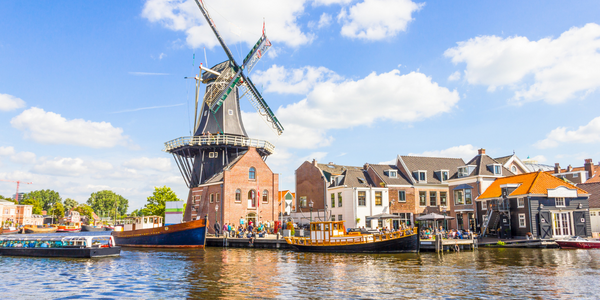Technology Category
- Application Infrastructure & Middleware - Event-Driven Application
- Functional Applications - Transportation Management Systems (TMS)
Applicable Industries
- Cities & Municipalities
- Transportation
Applicable Functions
- Logistics & Transportation
- Procurement
Use Cases
- Autonomous Transport Systems
- Transportation Simulation
Services
- Training
About The Customer
Lime is an American transportation rental company based in San Mateo, California. The company operates bicycle and scooter sharing systems in various cities around the world using dockless vehicles and a mobile app. In just two years of operation, Lime has established itself as a leader in smart mobility, leveraging Internet of Things (IoT) technology to reimagine how communities provide access to public transit. Lime's gig workforce, known as 'Juicers', are the backbone of its business and a driving force for its global expansion. These individuals use the Lime app to locate electric scooters in need of charging, collect them, and then charge them at the end of the day.
The Challenge
Lime, a transportation rental company based in San Mateo, California, faced a significant challenge in scaling their business. They needed to hire tens of thousands of gig workers, known as 'Juicers', across hundreds of cities worldwide, while maintaining the quality of their core business model. Prior to implementing a solution, Lime was manually sourcing and recruiting through email and job boards, which was a slow and inefficient process. The application process was cumbersome, leading to incomplete applications and a significant hiring bottleneck. Lime's main challenges were twofold: they needed to transition from a manual to an automated recruitment process to engage candidates quickly, and they needed to scale rapidly to expand into new markets.
The Solution
In March 2018, Lime transitioned from a manual to an automated recruitment process using Fountain's software. This allowed Lime to hire 'Juicers' at a high-volume pace with the goal of expanding into hundreds of cities worldwide. Fountain's software enabled Lime to send out SMS reminders to candidates to complete each step of the application process, eliminating the previous bottleneck. Another significant advantage was the ability to create hiring funnels quickly for every new market they opened. If Lime's engineering team had to create a new funnel for each market, their operations would have been slow and expensive. With Fountain's user-friendly interface, Lime could create or clone their own funnels and launch a new market within an hour. Fountain helped Lime manage a pipeline of tens of thousands of applicants and view data from all these pipelines with built-in analytics.
Operational Impact
Quantitative Benefit

Case Study missing?
Start adding your own!
Register with your work email and create a new case study profile for your business.
Related Case Studies.

Case Study
Turning A Stadium Into A Smart Building
Honeywell created what it called the “intelligent system” for the National Stadium in Beijing, China, turning the venue for the opening and closing events at the 2008 Summer Olympics into a “smart building.” Designed by highly controversial artist Ai Weiwei, the “Bird’s Nest” remains one of the most impressive feats of stadium architecture in the world. The 250,000 square meter structure housed more than 100,000 athletes and spectators at a time. To accommodate such capacity, China turned to Honeywell’s EBI Integrated Building Management System to create an integrated “intelligent system” for improved building security, safety and energy efficiency.
.png)
Case Study
Smart Street Light Network (Copenhagen)
Key stakeholders are taking a comprehensive approach to rethinking smart city innovation. City leaders have collaborated through partnerships involving government, research institutions and solution providers. The Copenhagen Solutions Lab is one of the leading organizations at the forefront of this movement. By bringing together manufacturers with municipal buyers, the Copenhagen Solutions Lab has catalyzed the development and deployment of next-generation smart city innovations. Copenhagen is leveraging this unique approach to accelerate the implementation of smart city solutions. One of the primary focus areas is LED street lighting.

Case Study
Airport SCADA Systems Improve Service Levels
Modern airports are one of the busiest environments on Earth and rely on process automation equipment to ensure service operators achieve their KPIs. Increasingly airport SCADA systems are being used to control all aspects of the operation and associated facilities. This is because unplanned system downtime can cost dearly, both in terms of reduced revenues and the associated loss of customer satisfaction due to inevitable travel inconvenience and disruption.

Case Study
IoT-based Fleet Intelligence Innovation
Speed to market is precious for DRVR, a rapidly growing start-up company. With a business model dependent on reliable mobile data, managers were spending their lives trying to negotiate data roaming deals with mobile network operators in different countries. And, even then, service quality was a constant concern.

Case Study
Buoy Status Monitoring with LoRa
The Netherlands are well-known for their inland waterways, canals, sluices and of course port activities. The Dutch Ministry of Infrastructure indicates that there are thousands of buoys and fixed items in and near water environments that would profit from IoT monitoring. One of the problems with buoys for example, is that they get hit by ships and the anchor cable breaks. Without connectivity, it takes quite some time to find out that something has happened with that buoy. Not to mention the costs of renting a boat to go to the buoy to fix it. Another important issue, is that there is no real-time monitoring of the buoys at this moment. Only by physically visiting the object on the water, one gains insight in its status.








